Tom Parkinson's monthly column, introducing the diverse range of flora and fauna on show at Sanctuary Lakes.
One of the enjoyable benefits of being a Sanctuary Lakes resident is that just walking around the resort, for a short stretch of the legs, can produce numerous close encounters with surprisingly fascinating flora and fauna.
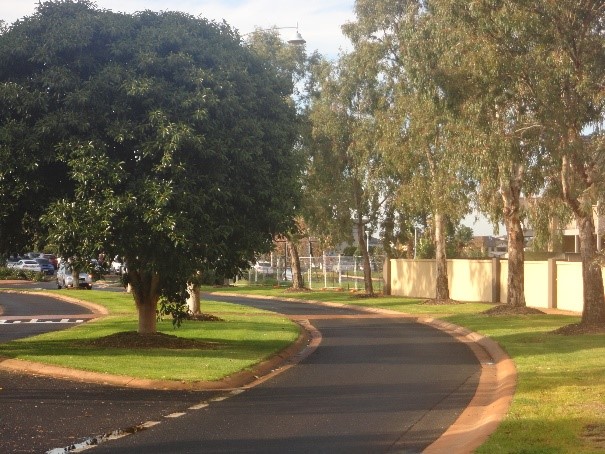 To prove the point, let's take a close up of one of the most commonly used sections, the start of Greg Norman Drive, from the Boulevard roundabout, by the Child Care Centre up to the Club House car park. I am sure every resident would have travelled this short distance.
To prove the point, let's take a close up of one of the most commonly used sections, the start of Greg Norman Drive, from the Boulevard roundabout, by the Child Care Centre up to the Club House car park. I am sure every resident would have travelled this short distance.
Immediately turning into Greg’s Drive, you become aware of a sumptuous avenue of tall shade trees - the iconic River Red Gums (Eucalyptus Camaldulensis) lining the pavement sides and Ficus Microcarpa parading along the median strip. Sanctuary Lakes Golf Club was opened on February 7th 2000, this drive had just been built over the salt pans and the trees were planted later that year. They are still teenagers and half their mature height. Imagine how magnificent they are going to look in say, ten years’ time. Already on a sunny day their intense shade leaves give off brilliant dark and light patterns along the driveway.
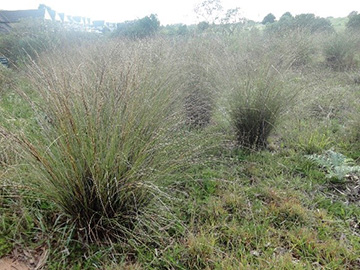 Chaffy Saw Edge (Gahinia Filum) The Ficus Macrocarpa is also called the Chinese Banyan, Indian Laurel, Curtain Fig or Gajumaru. It is a native of Australia, S.E. Asia and Micronesia. A distinctive pale grey trunk, glossy green foliage, and a fine-textured root system often forming from the trunk. An evergreen that forms small pink fruits which are a very popular late summer dining with our resident parrots, the Galahs and Corellas. Both the River Gums and the Ficus are avian friendly. As they mature we will notice a yearly increase in the number of native birds using them for nesting and a food source.
Chaffy Saw Edge (Gahinia Filum) The Ficus Macrocarpa is also called the Chinese Banyan, Indian Laurel, Curtain Fig or Gajumaru. It is a native of Australia, S.E. Asia and Micronesia. A distinctive pale grey trunk, glossy green foliage, and a fine-textured root system often forming from the trunk. An evergreen that forms small pink fruits which are a very popular late summer dining with our resident parrots, the Galahs and Corellas. Both the River Gums and the Ficus are avian friendly. As they mature we will notice a yearly increase in the number of native birds using them for nesting and a food source.
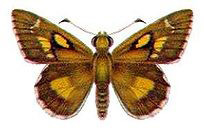 Altona Skipper Hesperilla flavescens flavescens On the Golf Course side of the Drive just before the first Car Park roundabout are clumps of our local native tussock-forming perennial, the Chaffy Saw Edge (Gahnia Filum) whose long elegantly thin grassy leaves grow 60 cm to 110 cm tall. It enjoys the saltmarsh land and is growing abundantly on the Golf Course fringes. It attracts butterflies and moths, is a food source for caterpillars, in particular our very own Altona Skipper Butterfly which finds a precious habitat in the stands of Chaffy Saw Sedge around the course.
Altona Skipper Hesperilla flavescens flavescens On the Golf Course side of the Drive just before the first Car Park roundabout are clumps of our local native tussock-forming perennial, the Chaffy Saw Edge (Gahnia Filum) whose long elegantly thin grassy leaves grow 60 cm to 110 cm tall. It enjoys the saltmarsh land and is growing abundantly on the Golf Course fringes. It attracts butterflies and moths, is a food source for caterpillars, in particular our very own Altona Skipper Butterfly which finds a precious habitat in the stands of Chaffy Saw Sedge around the course.
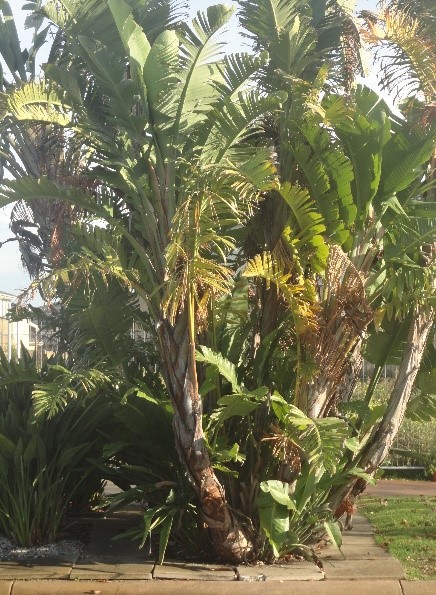 The Giant Bird of Paradise: Strelitzia Nicolai Two years ago, by the 1st Tee, when I first viewed this small (30-40mm wingspan) but very distinctive Butterfly, I could not name it. Looking it up, I found that it lived only in the Altona/Point Cook area and strangely in the Ararat district. It was on the endangered list, due to suburban growth, its food source partner the Chaffy Saw Sedge had been diminishing. In 2014, there were only approx. 1,000 Altona Skippers counted. An action plan had Chaffy’s planted on Altona coastal fringe and unbeknown to others, SLGC’s Chaffys had also made a marked improvement. Although still on the endangered list this summer’s count was double the 2014 figure.
The Giant Bird of Paradise: Strelitzia Nicolai Two years ago, by the 1st Tee, when I first viewed this small (30-40mm wingspan) but very distinctive Butterfly, I could not name it. Looking it up, I found that it lived only in the Altona/Point Cook area and strangely in the Ararat district. It was on the endangered list, due to suburban growth, its food source partner the Chaffy Saw Sedge had been diminishing. In 2014, there were only approx. 1,000 Altona Skippers counted. An action plan had Chaffy’s planted on Altona coastal fringe and unbeknown to others, SLGC’s Chaffys had also made a marked improvement. Although still on the endangered list this summer’s count was double the 2014 figure.
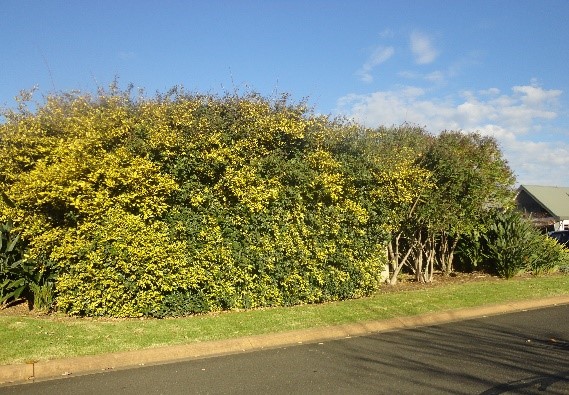 Elaeagnus Pungens Maculata Siverberry This little butterfly and our perennial tussock grass have been here together for thousands of years on the Basalt Plains. They have survived the European pastoralists, the foxes, hares, rabbits and horses of the sporting gentleman, the failed cereal farming, then the digging of salt pans and finally housing estates. Amazingly they are still here, let's hope they double again this summer. Look out for them fliting around the Chaffy Saw Sedge.
Elaeagnus Pungens Maculata Siverberry This little butterfly and our perennial tussock grass have been here together for thousands of years on the Basalt Plains. They have survived the European pastoralists, the foxes, hares, rabbits and horses of the sporting gentleman, the failed cereal farming, then the digging of salt pans and finally housing estates. Amazingly they are still here, let's hope they double again this summer. Look out for them fliting around the Chaffy Saw Sedge.
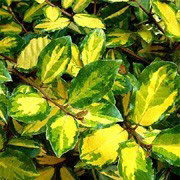 Distinctive leaves and small fruit Take the Rec Road at the first roundabout and you will see numerous flowering Bird of Paradise bushes, but 15 paces on your right you come face to face with the 7-metre-high Strelitzia Nicolai or the commonly known, Giant Bird of Paradise. This southern African plant fits the description tropical. The 1.8 m long leaves are grey-green and arranged like a fan at the top of the stems. The flower clusters are composed of a dark blue bract, white sepals and a bluish-purple "tongue". The entire flower can be as much as 18 cm high by 45 cm long and is typically held just above the point where the leaf fan emerges from the stem. Flowers are followed by triangular seed capsules. It is a magnificent specimen but across the road on the car park side are the striking feature of yellow flames on evergreen leaves of the Elaeagnus pungens 'Maculata' or the Silverberry.
Distinctive leaves and small fruit Take the Rec Road at the first roundabout and you will see numerous flowering Bird of Paradise bushes, but 15 paces on your right you come face to face with the 7-metre-high Strelitzia Nicolai or the commonly known, Giant Bird of Paradise. This southern African plant fits the description tropical. The 1.8 m long leaves are grey-green and arranged like a fan at the top of the stems. The flower clusters are composed of a dark blue bract, white sepals and a bluish-purple "tongue". The entire flower can be as much as 18 cm high by 45 cm long and is typically held just above the point where the leaf fan emerges from the stem. Flowers are followed by triangular seed capsules. It is a magnificent specimen but across the road on the car park side are the striking feature of yellow flames on evergreen leaves of the Elaeagnus pungens 'Maculata' or the Silverberry.
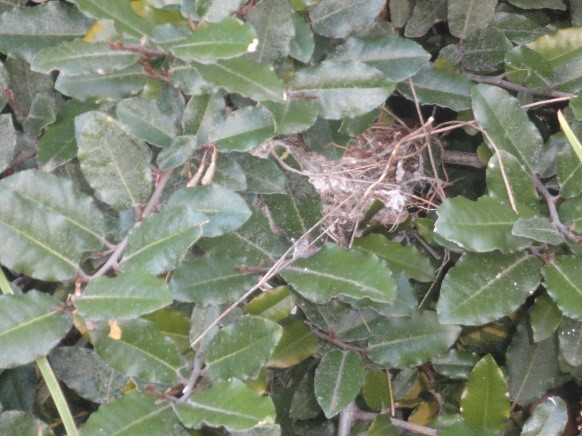 Old Honeyeater’s nest in the Silverberry
Old Honeyeater’s nest in the Silverberry
Originally grown to hide the electricity generator Elaeagnus pungens Maculata is a dense, branching shrub which can reach over 5 metres tall by 4 metres wide. It sprouts prolifically from its stem, spreading out and twining into adjacent vegetation. Their distinctive bright yellow 10 cm long leaves are outlined in splashed green. The twigs are a metallic copper colour, and the undersides of the leaves are speckled with a copper colour, too. Tiny white fragrant flowers appear under the leaves in early autumn and small orange fruit ripen in early spring. Silverberry is home to a multitude of New Holland Honeyeaters, its dense foliage protects them from predators. There is food from the fruit or the flower nectar and the numerous insects they attract. If you look carefully you can see at least four small nests on the outside fringe meaning there must a lot more in the safer denser centre.
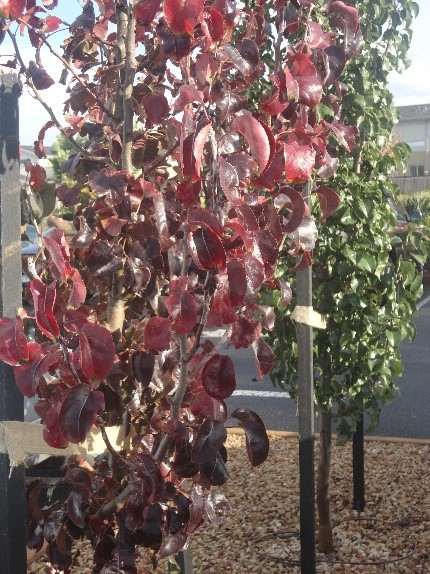 Manchurian Pear Pyrus ussuriensis Finally, the Golf Club Car Park's new residents - the Manchurian Pear. These deciduous trees with glossy green, oval shaped leaves that are highly valued for their spectacular deep red crimson to a rich orange or a pastel yellow autumn tones. In the following Spring, they will grandstand their clusters of open, cup-shaped, white flowers. The Manchurian within a few years, will mature to a height of 10m and 8 m wide providing the much-needed shade for the car park in the summer months. There you are, in less than four hundred metres fascinating and surprising flora with the bonus of our very own local butterfly species.
Manchurian Pear Pyrus ussuriensis Finally, the Golf Club Car Park's new residents - the Manchurian Pear. These deciduous trees with glossy green, oval shaped leaves that are highly valued for their spectacular deep red crimson to a rich orange or a pastel yellow autumn tones. In the following Spring, they will grandstand their clusters of open, cup-shaped, white flowers. The Manchurian within a few years, will mature to a height of 10m and 8 m wide providing the much-needed shade for the car park in the summer months. There you are, in less than four hundred metres fascinating and surprising flora with the bonus of our very own local butterfly species.